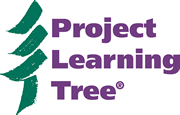Forests cover about 40 percent of the land area in the southeastern United States and much of this land is privately owned pine forests that are managed for timber production. The three activities in this section explore the connections between forests, climate change impacts, and management strategies for creating resilient forests. Students learn about research that is helping forest managers monitor and respond to climate change (Activity 4) and become familiar with the interaction of the different components of a forest system and the variety of management strategies available to landowners through the creation and application of a systems diagram (Activity 5). By working with growth data from loblolly pine forests and responding to a writing prompt (Activity 6), students learn how research with genetics is helping forests and forest managers adapt to climate change.
Key Concepts in Section 2
- Southeastern pine forests are highly productive, and most are privately owned by forest industry or individuals.
- Scientists are currently working to understand how climate change might affect forests.
- Forest management strategies are used to increase tree growth and enhance forest health.
- In an uncertain climate future, thinned forests should be more resilient.
- Through selection and breeding, tree breeders and forest researchers are producing improved seedlings that could have inherited genes conveying tolerance to drought and disease or good growth and form.
download the Section 2 Overview.

